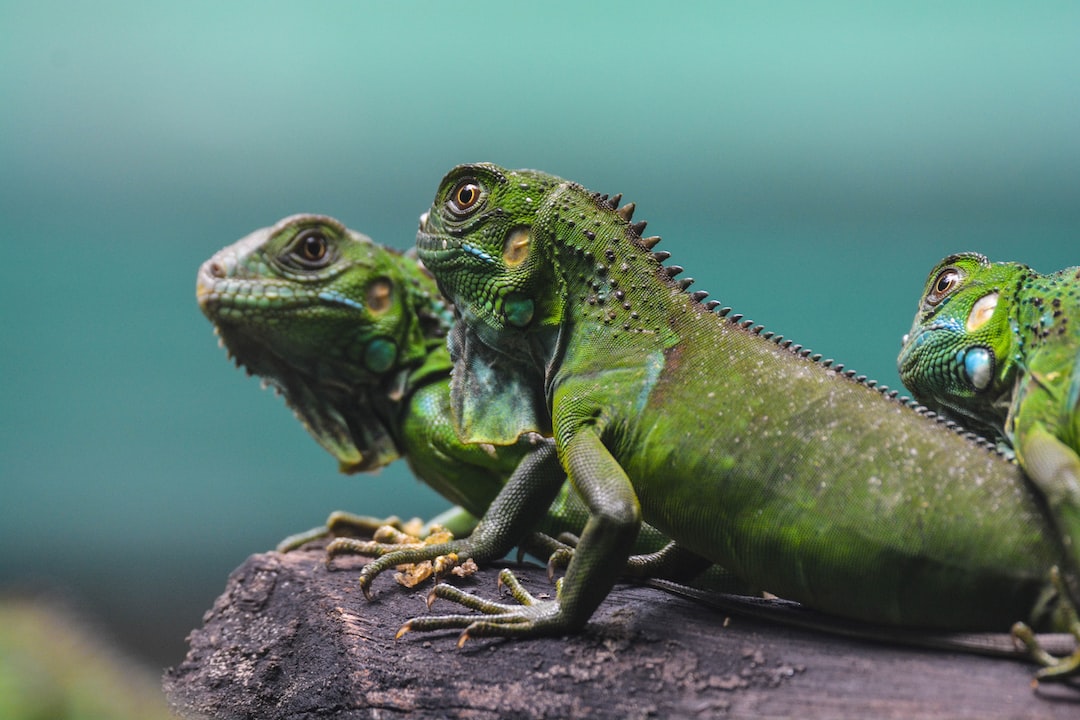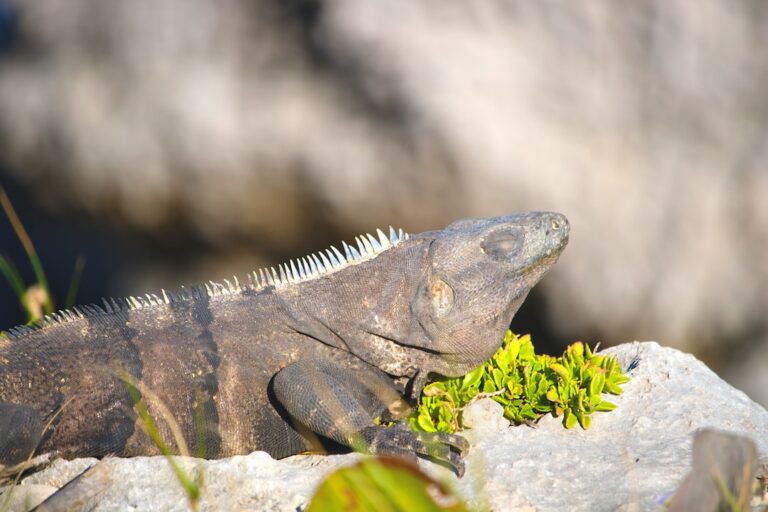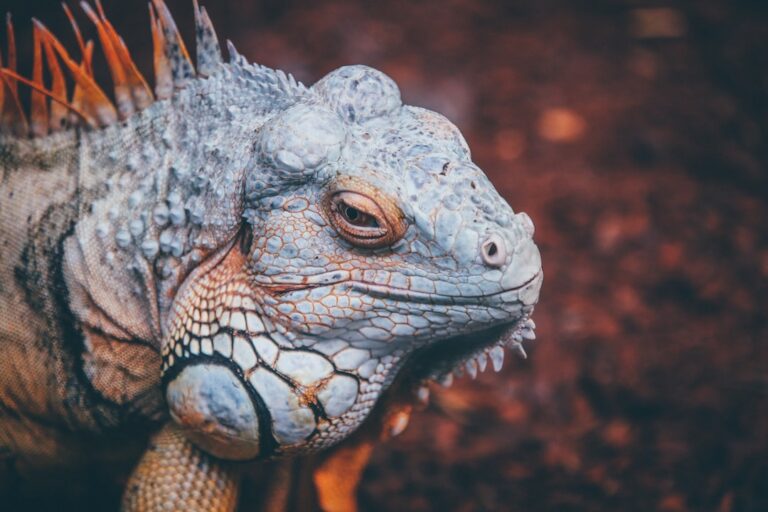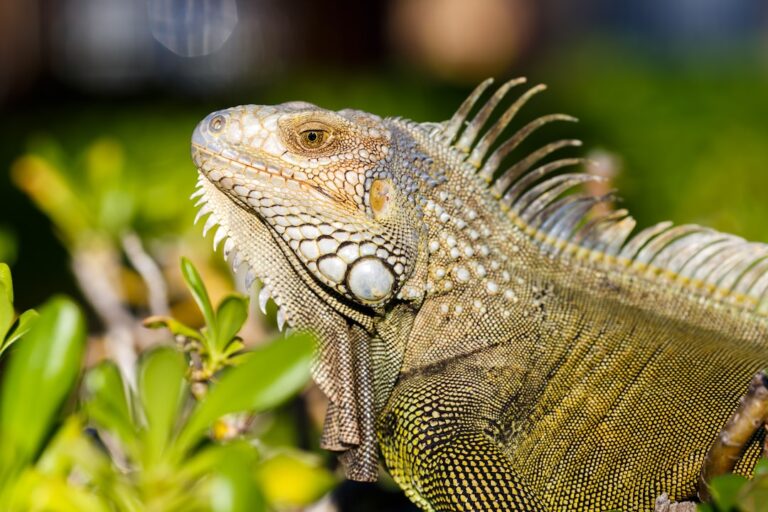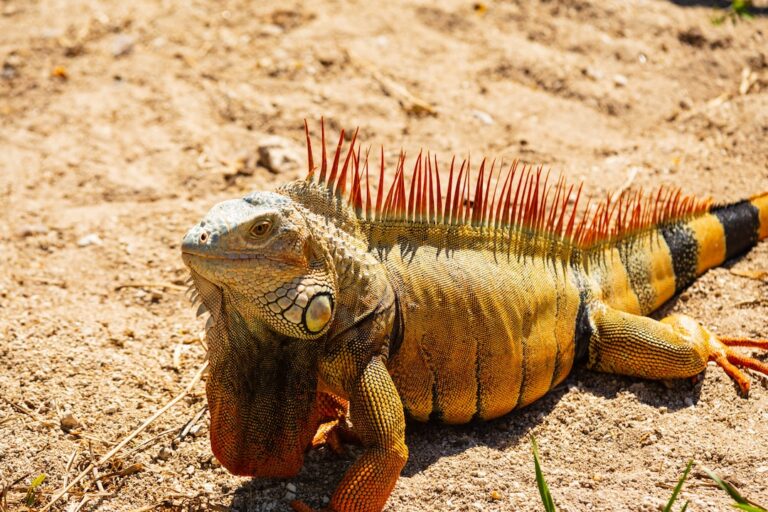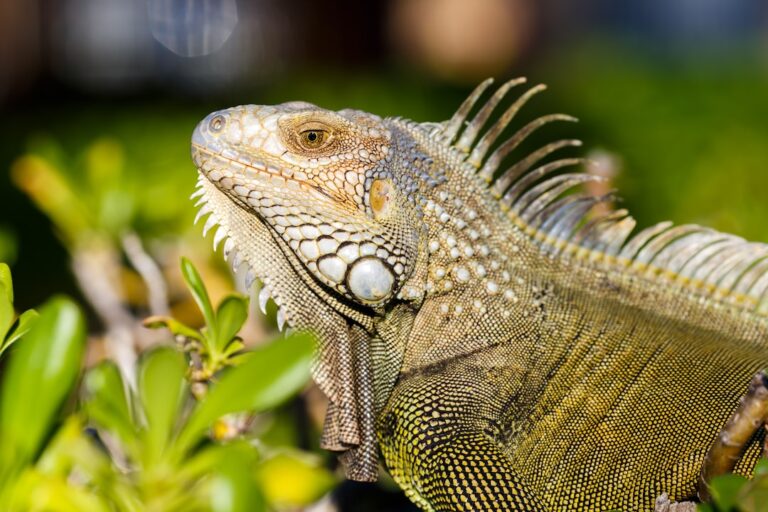Can Iguanas Climb Glass?
Iguanas are a type of lizard that are native to Central and South America. They are known for their distinctive appearance, with long tails, spiky crests along their backs, and a vibrant green coloration. Iguanas are arboreal creatures, meaning they spend a significant amount of time in trees and other elevated areas. This is because they have evolved to be excellent climbers, with physical characteristics that allow them to navigate their natural habitat with ease.
Climbing is an essential skill for iguanas, as it allows them to escape predators, find food, and regulate their body temperature. In the wild, iguanas can be found in tropical rainforests and other areas with dense vegetation. They use their climbing abilities to move through the trees, using their strong limbs and sharp claws to grip onto branches and trunks.
Table of Contents
The Physical Characteristics of Iguanas that Aid in Climbing
Iguanas have several physical features that make them well-suited for climbing. One of the most notable features is their long, muscular tail. The tail acts as a counterbalance, helping the iguana maintain stability as it moves through the trees. It also serves as a tool for communication, with males using their tails to display dominance or attract mates.
In addition to their tails, iguanas have strong limbs with sharp claws. These claws allow them to grip onto surfaces securely, whether it’s a tree branch or a rock face. The claws are also useful for digging burrows or defending themselves against predators.
Another physical characteristic that aids in climbing is the iguana’s strong jaw muscles and sharp teeth. This allows them to bite onto branches or other surfaces to help pull themselves up or maintain their position.
Can Iguanas Climb Smooth Glass Surfaces?
While iguanas are excellent climbers in their natural habitat, they may struggle to climb smooth glass surfaces. Glass does not provide the same grip as tree bark or rocks, making it difficult for iguanas to get a foothold. However, this does not mean that iguanas won’t attempt to climb glass in captivity.
In a captive environment, iguanas may try to climb glass out of curiosity or as a way to explore their surroundings. This behavior can be problematic, as it can lead to injuries or stress for the iguana. It’s important for iguana owners to understand the risks associated with climbing glass and take steps to minimize them.
The Importance of Providing Adequate Climbing Space for Iguanas
Providing iguanas with adequate climbing space is crucial for their physical and mental well-being. In the wild, iguanas have access to a variety of climbing surfaces, such as trees, rocks, and vegetation. They are able to move freely and engage in natural behaviors like basking in the sun or searching for food.
In captivity, it’s essential to replicate these natural conditions as much as possible. Without enough climbing space, iguanas can become stressed and develop health issues. They may also exhibit abnormal behaviors, such as pacing or aggression.
Inadequate climbing space can also lead to physical problems for iguanas. Without the opportunity to exercise and stretch their muscles, they may become weak or develop joint issues. Additionally, if an iguana attempts to climb glass and falls, it can result in injuries such as broken bones or cuts.
Tips for Creating a Safe and Stimulating Climbing Environment for Iguanas
To create a safe and stimulating climbing environment for iguanas, there are several things you can do. First and foremost, make sure that the enclosure is large enough to accommodate the size of your iguana. Iguanas need plenty of space to move around and climb, so a small enclosure will not be suitable.
Provide a variety of climbing structures within the enclosure. This can include branches, logs, rocks, and platforms at different heights. Make sure that these structures are securely anchored and can support the weight of your iguana. It’s also important to regularly inspect these structures for any signs of wear or damage.
Consider using materials that mimic the texture of natural climbing surfaces. This can include cork bark, reptile carpet, or textured tiles. These materials will provide better grip for your iguana and reduce the risk of them attempting to climb glass.
Understanding Iguana Behavior and How it Relates to Climbing
Understanding iguana behavior is crucial when creating a suitable climbing environment. Iguanas are diurnal creatures, meaning they are most active during the day. They spend a significant amount of time basking in the sun to regulate their body temperature.
Observing your iguana’s behavior can give you valuable insights into their climbing habits. For example, if you notice that your iguana spends a lot of time near the top of the enclosure, it may indicate that they prefer higher perches. On the other hand, if your iguana spends more time on the ground, they may prefer lower climbing structures.
It’s also important to pay attention to your iguana’s body language. Signs of stress or discomfort can include tail whipping, hissing, or puffing up their body. If you notice these behaviors when your iguana is attempting to climb glass or navigate their enclosure, it may be a sign that they are not comfortable or feel unsafe.
The Risks of Iguanas Climbing Glass and How to Minimize Them
As mentioned earlier, there are risks associated with iguanas attempting to climb glass surfaces. The most obvious risk is that the iguana may fall and injure themselves. This can result in broken bones, cuts, or other injuries that require veterinary care.
Another risk is that the iguana may become stressed or agitated when they are unable to climb the glass. This can lead to behavioral issues and a decline in their overall well-being.
To minimize these risks, there are several steps you can take. First, ensure that the enclosure is escape-proof and that there are no gaps or openings where the iguana could squeeze through. This will prevent them from attempting to climb the glass in an effort to escape.
You can also use textured surfaces on the inside of the enclosure to discourage climbing on the glass. This can include applying adhesive reptile carpet or using textured tiles. These surfaces will provide better grip for your iguana and reduce their desire to climb the glass.
Common Mistakes to Avoid When Housing Iguanas in Glass Enclosures
Housing iguanas in glass enclosures can be challenging, and there are several common mistakes that people make. One of the most significant mistakes is providing an enclosure that is too small. Iguanas need plenty of space to move around and climb, so a small enclosure will not be suitable for their needs.
Another mistake is not providing enough climbing structures within the enclosure. Iguanas need a variety of perches at different heights to mimic their natural habitat. Without these structures, they may become stressed or bored.
It’s also important to avoid placing the enclosure in direct sunlight or near drafts. Extreme temperatures can be harmful to iguanas, so it’s crucial to provide a stable and comfortable environment for them.
Alternatives to Glass Enclosures for Iguanas
While glass enclosures are a popular choice for housing iguanas, they may not always be the best option. There are several alternative housing options that may be more suitable for iguanas’ needs.
One option is to build a custom enclosure using materials such as wood or PVC. These enclosures can be designed to provide ample climbing space and can be customized to fit the specific needs of your iguana.
Another option is to create an outdoor enclosure for your iguana. This can be done in a secure and controlled environment, such as a screened-in porch or a fenced-in yard. Outdoor enclosures allow iguanas to experience natural sunlight and fresh air, which can be beneficial for their overall health.
Balancing Safety and Enrichment for Iguanas in Captivity
In conclusion, providing iguanas with adequate climbing space is essential for their physical and mental well-being. Iguanas are natural climbers, and without the opportunity to engage in this behavior, they can become stressed and develop health issues.
When housing iguanas in glass enclosures, it’s important to take steps to minimize the risks associated with climbing glass. This can include providing enough climbing structures within the enclosure, using textured surfaces, and ensuring that the enclosure is escape-proof.
It’s also crucial to balance safety and enrichment when creating a climbing environment for iguanas. While it’s important to provide a safe and secure enclosure, it’s equally important to provide opportunities for mental stimulation and natural behaviors.
By understanding iguana behavior, observing their preferences, and providing a suitable climbing environment, you can ensure that your iguana is happy and healthy in captivity.
If you’re interested in learning more about reptiles, you might also enjoy reading the article “Can Chameleons Eat Blueberries?” on Reptile Friend’s website. It explores the dietary habits of chameleons and whether or not they can safely consume blueberries. Click here to check it out!

